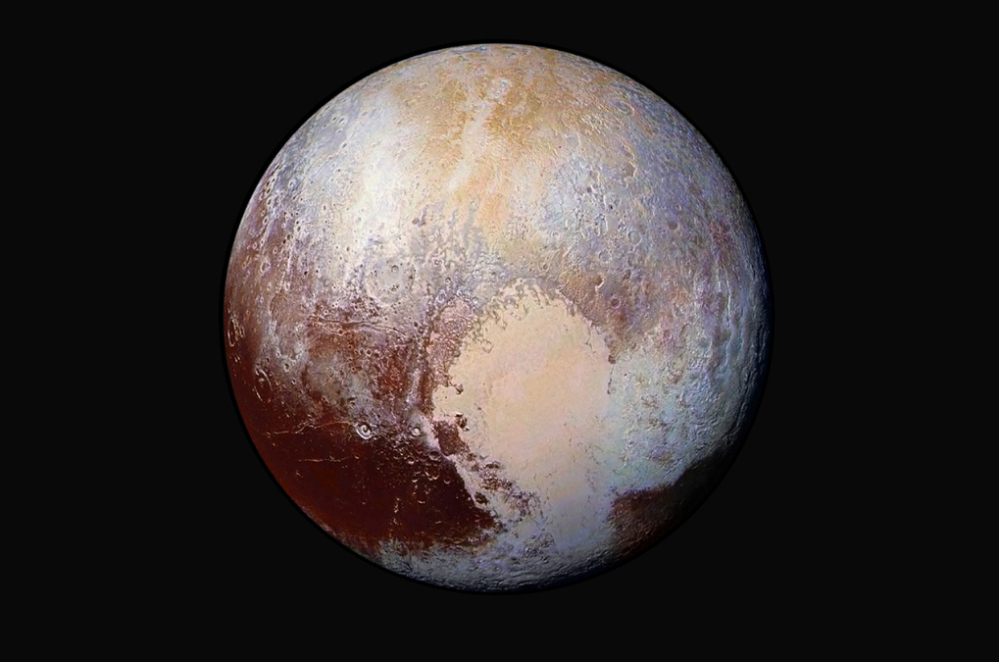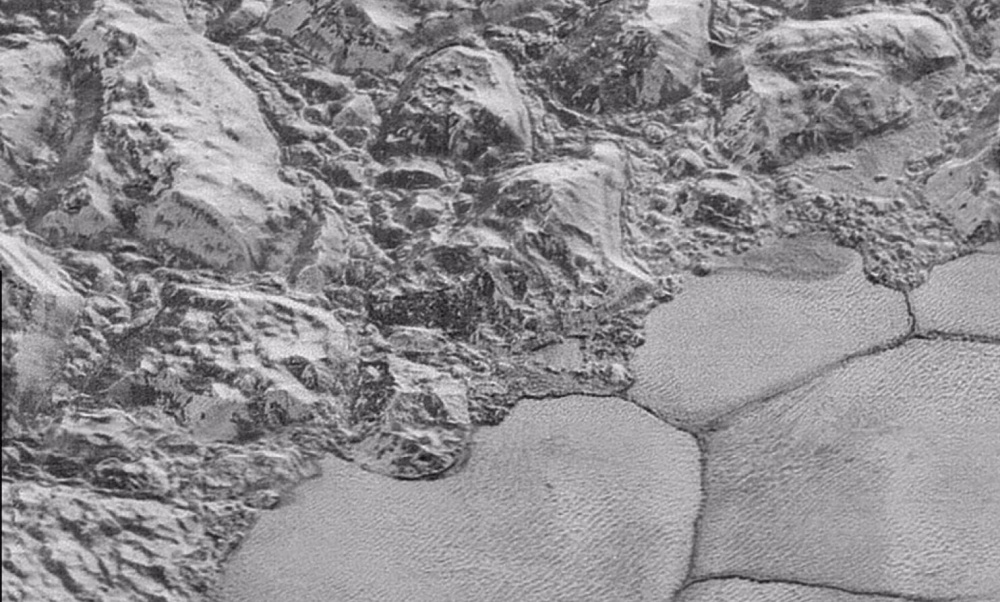Before the New Horizons flyby, planetary scientist James Keane saw himself as a “Pluto skeptic.”
“I don’t know if I or anyone could have predicted that Pluto would be as interesting as it turned out to be,” he said.
Boy was he wrong. The distant dwarf planet is home to mysterious mountains that could be ice volcanoes and icebergs of water ice floating atop a plain of frozen nitrogen. Chief among Pluto’s fascinating – and endearing – features is its bright, white heart full of ice and nitrogen snow.
In one of two new papers on Pluto published Wednesday in the journal Nature, Keane and his colleagues write that the western lobe of this heart – an ice-filled impact basin called Sputnik Planitia – may have acted like an extra weight on one side of a bowling ball, causing the planet to wobble away from its original spin axis. A second study led by University of California – Santa Cruz planetary scientist Francis Nimmo suggests that Sputnik Planitia may be so heavy because an underground ocean is hiding beneath the planet’s icy crust.
Keane, a PhD student at the University of Arizona, and Nimmo were both immediately drawn to Sputnik Planitia (pronounced pla-NI-sha) because it is located at what’s called the anti-Charon point – the spot on Pluto’s surface that is directly opposite the side that faces Pluto’s largest moon. (Pluto and Charon are “tidally locked,” meaning that their orbits and rotations are synchronized so that one side of Pluto always faces Charon, and vice-versa.)
“We were struck initially that the brightest thing, the most anomalous thing, was at a special location on Pluto,” Keane said. “If you were to draw a line connecting the center of Charon through the center of Pluto it would come out on the far side of Pluto and it would go right throw Sputnik Planitia.”
This is suggestive of a phenomenon known as true polar wandering: The planet’s spin axis remains the same relative to the rest of the solar system, but the planet itself reorients so that its poles are at two new locations. Imagine a desk globe in which the ball of the Earth itself could roll 360 degrees within the bracket, but the axis on which it rotates remains the same.
Pluto would reorient itself to situate Sputnik Planitia at the anti-Charon point if the basin was inordinately heavier than the rest of the dwarf planet – for complicated physics reasons, this orientation is what makes the lopsided planet most stable.
But, as Nimmo put it, “Sputnik Planitia is a hole in the ground. So normally you’d expect it to have less weight not more weight.” Keane and Nimmo offer up different – but not necessarily contradictory – explanations for why Sputnik Planitia might be so heavy. Keane and his colleagues note that Sputnik Planitia is full of volatile ices like nitrogen. Though these compounds would be gases on Earth, on Pluto it is so cold that they freeze and behave like glaciers, flowing ever so slowly. Pluto is also colder at low elevations than at high ones, so nitrogen and methane probably get trapped in Sputnik Planitia’s deep basin. And, crucial to this study, nitrogen ice is denser than the water ice that makes up the rest of Pluto’s crust.
Keane’s team found further evidence of Pluto’s polar wandering in the crusts that span the dwarf planet’s surface. Like all bodies with a moon, Pluto has what’s known as a tidal bulge at the latitude around which Charon orbits. As Pluto reoriented, the location of that tidal bulge would have shifted, fracturing the crust.
The pattern of these breaks on Pluto indicate how its tidal bulge shifted – and matched up perfectly with Keane’s prediction of how Pluto may have reoriented.
Instead of examining what’s inside Sputnik Planitia, Nimmo and his colleagues studied what might be below it.
Data from New Horizons suggests that Pluto could have sloshing subsurface ocean of liquid water. The planet has cracks on its surface characteristic of the planet expanding and contracting as parts of that ocean melt and freeze.
Send questions/comments to the editors.




Success. Please wait for the page to reload. If the page does not reload within 5 seconds, please refresh the page.
Enter your email and password to access comments.
Hi, to comment on stories you must . This profile is in addition to your subscription and website login.
Already have a commenting profile? .
Invalid username/password.
Please check your email to confirm and complete your registration.
Only subscribers are eligible to post comments. Please subscribe or login first for digital access. Here’s why.
Use the form below to reset your password. When you've submitted your account email, we will send an email with a reset code.